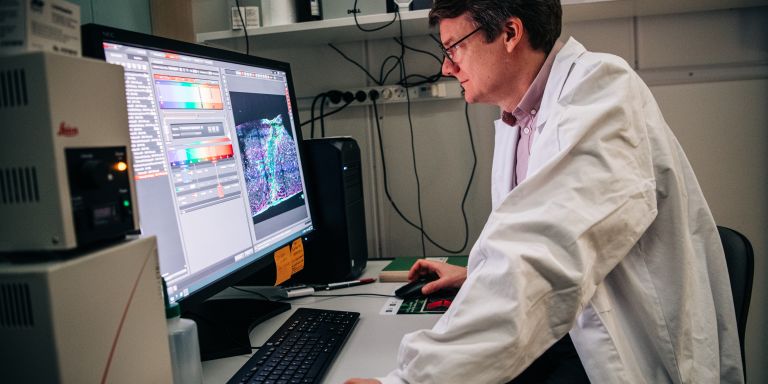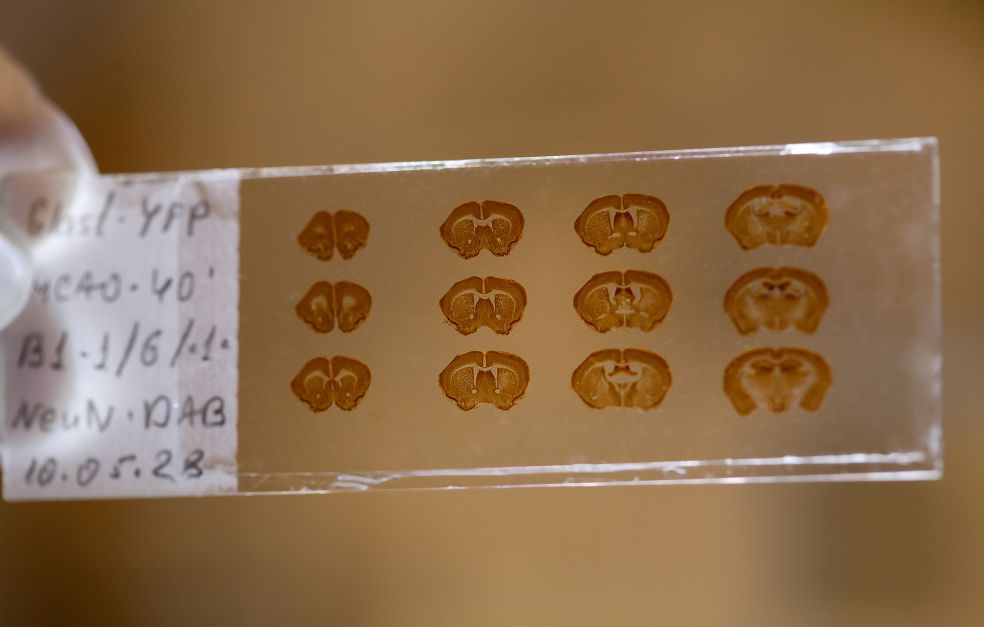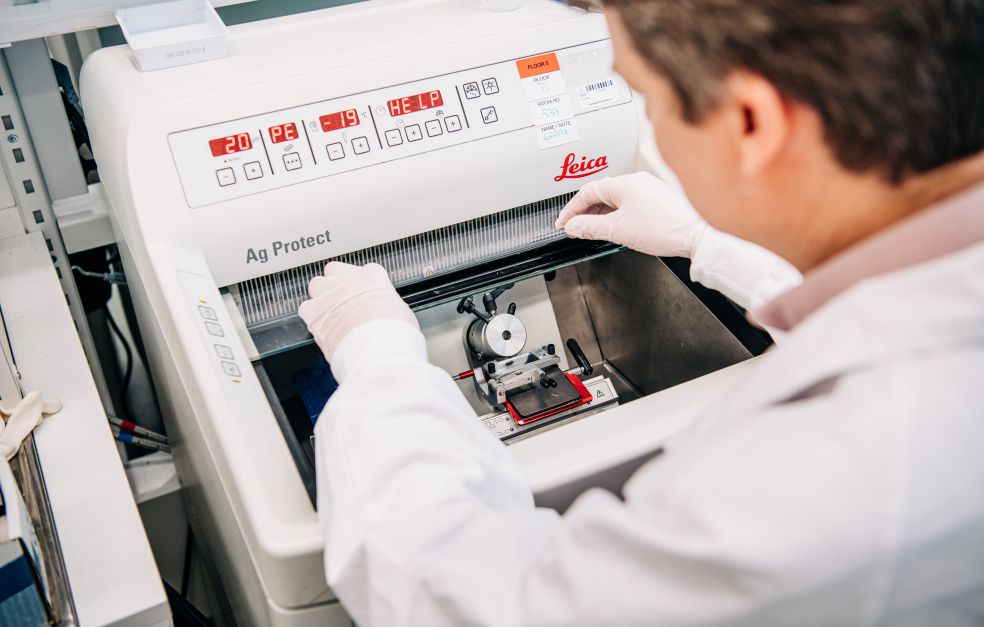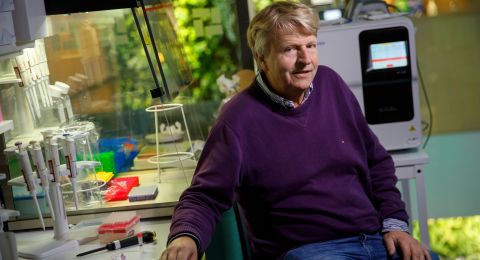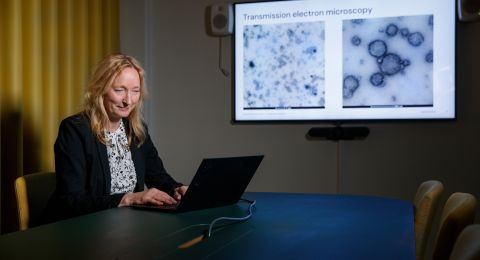Damage to the spinal cord often leads to lifelong disabilities. One of the obstacles that limit regeneration is the formation of scar tissue, which prevents the growth of nerve fibers. Wallenberg Academy Fellow Christian Göritz is studying the mechanisms underlying the formation of scar tissue. The goal is to control scarring, an ability that may ultimately lead to new therapies.
Christian Göritz
Associate Professor of Regenerative Medicine
Wallenberg Academy Fellow, prolongation grant 2018
Institution:
Karolinska Institutet
Research field:
Pathological scarring and repair mechanisms in the central nervous system
The spinal cord is the part of the central nervous system, which connects the brain with the body. It can be described as the main cable, along which a constant stream of information between the brain and other parts of the body flows. The spinal cord is shielded by bone and highly sensitive to damage. Christian Göritz, researcher at Karolinska Institutet, explains:
“The consequences are dramatic if the central nervous system is compromised, since it is our ‘mainframe computer’, where all sensory information is received and decisions governing bodily functions are made.”
Damage to the central nervous system can result from trauma caused by a road or skiing accident, for instance. Tumors, vascular disease and autoimmune diseases such as multiple sclerosis can also damage the central nervous system. Researchers have long sought different ways of helping patients to regain feeling and movement.
The body’s healing capacity
Dr. Göritz is particularly interested in regenerative medicine, which involves ways of stimulating the body’s own ability to repair damaged tissue or organs.
Wherever and however injury occurs, the body reacts by initiating a healing response to seal the wound. The process often involves little drama, as when someone accidently cuts their finger while chopping vegetables.
“We end up with a scar on our finger, but are not otherwise much affected. We might lose some feeling for a while. But when the central nervous system is affected, the loss of function can be enormous and scar tissue is a much bigger obstacle.”
The nerve fibers whose job is to carry information from point A to point B are disrupted. They are prevented from re-forming functional connections by scar tissue. It may be likened to road works that are never completed, with the scar tissue remaining like a block of concrete – in the middle of the road.
For a long time, scientists did not know which cells are the origin of scar tissue. But ten years ago, Dr. Göritz made a fundamental discovery. His research indicated that a small population of perivascular cells give rise to fibrotic scar tissue.
“Normally, these cells are found in the wall of small blood vessels. But after damage to the central nervous system, they multiply and migrate into the lesion.”
Control over scarring
The discovery was published in Science in 2011 and formed the basis for deeper research. Now a Wallenberg Academy Fellow, Dr. Göritz is continuing to study the role of fibrotic perivascular cells. It has been established that these cells are needed by the body to seal wounds. The hope is to find clues enabling the scientists to map the healing process following spinal cord injury so they can eventually control the scarring process.
“We don’t want to eliminate this reaction completely – in medical terms that would be a bad idea. We want to retain the positive effects but still get rid of the scar tissue. That would be ideal.”
In the laboratory, Dr. Göritz and his research team are attempting to identify the mechanisms behind the formation of scar tissue. Using genetically modified mice, the research team could experimentally reduce scarring.
“When we experimentally reduced scarring, we found that some nerve fibers could grow through the lesion and reestablish synapses with other neurons. Most importantly, our manipulations improved the recovery of motor functions in mice after spinal cord injury.”
The findings were published in Cell in 2018, and are seen as a promising first step towards future therapies.
“We see this study as a prove of principle.”
Translational studies
The next step for the researchers is to study scar tissue from patients. Preliminary results show that the same perivascular cells are also present in the human central nervous system, and that similar scar tissue forms after different lesions in humans, including spinal cord injuries, stroke and MS.
“We currently finalizing an extensive study, one of which I’m very proud. We investigated fibrotic tissue formation in several different central nervous system lesion models in mice, and compared our results to similar lesions in humans.”
The researchers want to understand the molecular mechanisms involved. The comparison of different lesion models helps to identify the important factors, which are common to most lesions.
“I think the principles are the same – the same cells and molecules. Although timing, distribution of cells and the combination of molecules may differ between distinct lesions. It’s like ice cream in a variety of flavors.”
“The Wallenberg Academy Fellow award is a mark of quality and an acknowledgement of pre-eminent research. It is particularly gratifying to have been awarded an extended grant in intense competition with many prominent researchers. The grant has given me long-term funding to create a stable research environment, ensuring continuous high quality research.”
The research offers huge medical potential, but there is a fine line to walk in announcing progress without giving rise to unrealistic expectations.
“Spinal cord injury is a terrible condition and I frequently receive emails from patients that look for help. While our goal is to develop a therapy, I try as gently as possible to explain the steps that research entails. It is a long way from basic research to a therapy that can eventually be implemented in health care.”
Text Nils Johan Tjärnlund
Translation Maxwell Arding
Photo Erik Cronberg, Magnus Bergström

